|
Randy Thom,
Sound Designer,
'What Lies Beneath'
By Elina Shatkin
"I'm always amused when
I'm introduced to somebody as a sound person. They often say something
like, 'Well, sound is so important to film.' Saying that tells me that
they don't really think sound is important at all, because they would
never, if they were introduced to the director of photography, say, 'You
know, visual images are so important to film.' Clearly somebody who says
that doesn't understand how important sound really is."
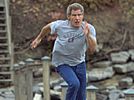 That's
the pronouncement from Randy Thom, one of Hollywood's premier sound designers.
His latest collaboration with director Robert Zemeckis is "What
Lies Beneath," a thriller from DreamWorks starring Michelle Pfeiffer
and Harrison Ford. Thom previously did the sound design on two other Zemeckis
films, "Contact" and "Forrest Gump," which earned him two of his eight
Oscar nominations in the sound categories. He received an Oscar in 1984
for his work on "The Right Stuff." That's
the pronouncement from Randy Thom, one of Hollywood's premier sound designers.
His latest collaboration with director Robert Zemeckis is "What
Lies Beneath," a thriller from DreamWorks starring Michelle Pfeiffer
and Harrison Ford. Thom previously did the sound design on two other Zemeckis
films, "Contact" and "Forrest Gump," which earned him two of his eight
Oscar nominations in the sound categories. He received an Oscar in 1984
for his work on "The Right Stuff."
How did you split the
responsibilities between you and your supervising sound editor, Dennis Leonard?
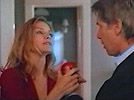 Dennis'
main job on this film -- I could say the same of the film that we did before,
"The Iron Giant" -- was to supervise the rest of the editors who were working
on the project and take care of the constant rescheduling. That always seems
to be necessary because everything is constantly changing -- when you record
foley, when editors come and go, etc. He was also reporting to DreamWorks
and to Bob Zemeckis' producers, Steve Boyd and Steve Starkey, about expenses
and deadlines. Dennis certainly had some creative input, but his job was
mainly administrative. Dennis'
main job on this film -- I could say the same of the film that we did before,
"The Iron Giant" -- was to supervise the rest of the editors who were working
on the project and take care of the constant rescheduling. That always seems
to be necessary because everything is constantly changing -- when you record
foley, when editors come and go, etc. He was also reporting to DreamWorks
and to Bob Zemeckis' producers, Steve Boyd and Steve Starkey, about expenses
and deadlines. Dennis certainly had some creative input, but his job was
mainly administrative.
Did you talk with Robert Zemeckis about the sound design?
I always try to get involved as early as possible on projects. The sound
people are typically not brought on until the last possible minute, and
I think that's a terrible way to organize things. It's symptomatic of the
fact that sound isn't taken very seriously in filmmaking. A certain amount
of lip service is paid to sound, but that's usually as far as it goes. I
think if you really take sound seriously, you start thinking about it as
early as possible, and Zemeckis certainly does that. You get people involved
-- the composer and me and a variety of other people -- as early as possible
so that you can begin figuring out how the sound is going to work in the
film.
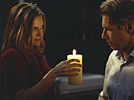 I
think another misconception about sound in movies is that the director knows
from the beginning exactly how everything is going to sound; that's almost
never the case. As with any work of art, you discover the most important
things as you go. You learn by trying things that don't work, going down
dead-end streets and doing a lot of experimentation. What I typically do
on Zemeckis films is I have some initial conversations really early, ideally
before the shooting starts. That way, from looking at the script and talking
with the director, I can say, "How about if we do this? Since the camera
is going to be doing this according to the script, how about if I try this?"
Sometimes it works and sometimes it doesn't. I
think another misconception about sound in movies is that the director knows
from the beginning exactly how everything is going to sound; that's almost
never the case. As with any work of art, you discover the most important
things as you go. You learn by trying things that don't work, going down
dead-end streets and doing a lot of experimentation. What I typically do
on Zemeckis films is I have some initial conversations really early, ideally
before the shooting starts. That way, from looking at the script and talking
with the director, I can say, "How about if we do this? Since the camera
is going to be doing this according to the script, how about if I try this?"
Sometimes it works and sometimes it doesn't.
What do you talk about with a director in these early conversations?
Let's use "What Lies Beneath" as an example. It was clear from reading
the script that Claire (Pfeiffer) hears things in the house. But it wasn't
clear exactly what she was going to hear. At one point, voices are mentioned,
so we assumed that she would hear voices of some kind. But what kinds of
voices? Would they be wailing voices or people in conversation or whispering?
It turned out to be whispering. That was an early topic of discussion --
exactly what is she going to hear? And should the house develop a set of
voices, too? That is, since several of the scenes happen in the bathroom,
should we figure out a way to make the pipes creak and groan in a way that
sounds like voices? Or should we just use eerie and sinister sounds? I often
begin by brainstorming and knowing something about the script in terms of
what sound will nudge along the story and heighten the drama or emotion
of a scene.
You bring up an interesting point, because I wanted to ask you about
the bathtub scene. What kind of sounds did you include in that scene to
heighten the tension and push along the story?
There are several bathtub scenes. I assume you mean the one where Claire
nearly drowns in the bathtub?
Yes. I'd like to talk about all of them, but let's talk about that one
first.
From the earliest discussions, we knew that we didn't want to overdo it.
We didn't want to make the near-drowning sequence too "sound designy." As
an overarching rule, I think the most important factor in determining the
degree to which sound will participate in the storytelling is how point
of view is handled. The reason I say that is because I think the most powerful
sound sequences in movies are POV sequences. POV sequences are great for
sound, because once the audience gets the impression that what they are
experiencing is being filtered through somebody else's consciousness, the
filmmaker can do almost anything he or she wants and viewers will accept
it.
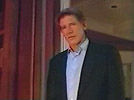
Filmmakers can take all
kinds of artistic license in determining exactly how a person sees something
or hears something. In an extreme example, things can get out of focus,
indicating that a character is beginning to lose consciousness. Or things
can get very dark, or the colors can change. And you can do analogous
things with the soundtrack. Even though this near-drowning scene in the
bathtub is a POV sequence, we didn't want to go too far out on a limb.
But we were able -- partly because at a certain point her ears go underwater
-- to alter all of the sounds the audience hears at that point. We muffled
them to sound like they're underwater. After that point, even though there
are more shots above the water, you hear everything as if you were underwater
and inside her brain.
I should mention that this POV thing has a lot to do with how dialogue
is used in a sequence. It almost always works best when there's no dialogue
or when the dialogue is sparse. I can't tell you how many times I've tried
to wedge sound design into sequences that are filled with people talking
to each other, and it virtually never works. I don't pretend to know all
the reasons why it doesn't work, but one of them is that when people talk,
it activates a certain part of people's brains as they shut out the nonliteral
stuff that I'm talking about. You can't do both things at the same time
unless the dialogue itself is altered in some way.
Before her ears go under the water, you're hearing pretty much what you
would hear in that room. You're hearing the faucet filling up the tub,
and you're hearing Norman (Ford) walking around the bathroom and talking
and moving things. When her ears go under the water, we muffle the sound
-- that is, muffle everything you do hear -- so you hear a muffled version
of the water going into the tub, and you hear muffled versions of her
movements because she tries to manipulate the shower device, which is
lying on the bottom of the tub, so that she can use it to turn the faucet
off. You hear the little squeaks and scrapes that that makes in kind of
a muffled and slightly reverberant way. We added some bubble sounds and
a couple of what I hoped were going to be subtle, nearly musical tones.
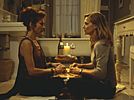 Bob
decided early on that there probably wasn't going to be any music in this
near-drowning scene. We did a similar thing in "Contact," when Jodie Foster
first gets onto the device that's going to take her into another dimension.
Bob felt strongly that he didn't want music there, because on some level
music always tells you that you're watching a movie, and he wanted that
sequence in "Contact" to feel like an amplified documentary. So he didn't
use a score there. In a sense, the score was the sound effects. The bathtub
sequence in "What Lies Beneath" is similar. There are a couple of musical
stings to frighten the audience before it happens, but once she goes under
the water, there's no music in the traditional sense. There are a couple
of slightly sinister musical tones that I put in on top of the bubbling
and the water flowing into the tub. Bob
decided early on that there probably wasn't going to be any music in this
near-drowning scene. We did a similar thing in "Contact," when Jodie Foster
first gets onto the device that's going to take her into another dimension.
Bob felt strongly that he didn't want music there, because on some level
music always tells you that you're watching a movie, and he wanted that
sequence in "Contact" to feel like an amplified documentary. So he didn't
use a score there. In a sense, the score was the sound effects. The bathtub
sequence in "What Lies Beneath" is similar. There are a couple of musical
stings to frighten the audience before it happens, but once she goes under
the water, there's no music in the traditional sense. There are a couple
of slightly sinister musical tones that I put in on top of the bubbling
and the water flowing into the tub.
How did the sounds in this bathtub scene differ from the effects in
the other bathroom scenes?
The others are very literal and straightforward. The first scene in the
film after the main title sequence is Claire in the bathtub. The scene
begins with her face bursting out of the tub as if she's coming out of
a dream. You hear her splashing around in the tub, and the bathroom has
a normal tonality.
The scene that's probably the "sound designiest" in terms of the bathroom
is the one where she leaves the bathroom, walks through the other room,
comes back into the bathroom, and the bathtub is mysteriously filled in
the 30 seconds that she's left the room. She creeps into the bathroom,
and you hear crickets outside the house. As she goes deeper into the bathroom,
the tone of the crickets changes to a sinister one. It's a little cricketlike,
but it isn't crickets at all. Those cricket sounds function like music;
they have a musical sense about them, but there's no melody. It's just
a sinister musical tone.
In that scene, the bathroom is filled with mist, which is another visual
technique that opens the door to more subjective sound. There's a number
of things that you can do visually to open the door to creative sound
design. Darkness is one of them. The darker a shot is, the more you can
do with the sound, because there's a certain mystery about it. Smoke and
mist tend to make me happy as a sound designer because they allow me to
do more things.
You mentioned that you and Robert wanted to have whispering voices
in the house as opposed to wailing voices. Why?
There's this question in the story of whether Claire is really hearing
this stuff or not. Is she somehow hearing the people next door? Are there
really people inside the house? Are these voices only in her head? Is
she going insane? We decided after some experimenting that the whispering
helped maintain that ambiguity in the best way. We knew that we didn't
want to understand the voices.
I wound up using bits and pieces of many things to make these whispers.
Some of it is Michelle Pfeiffer whispering, some of it is the woman who
played Madison, Amber Valletta, and some of it is the voices of old Mexican-American
women who were praying. That had an interesting sound about it to me,
so I cut that into pieces and played it backwards, so that even if you
listen to it all by itself and you speak Spanish, you won't be able to
understand what they're saying. Somehow it comes across as mystical or
spiritual.
What kind of effects did you need to foley or rerecord to enhance their
effect? Were there some specific instances where that was very important?
You probably know what foley is, but there are a lot of misconceptions
about it, so maybe I should do my 30-second explanation. Foley is a particular
way of recording certain kinds of sound effects. That is, it's recording
sound effects while looking at visual images of those actions taking place.
You could do an entire film without any foley and still put in all those
sound effects. You simply go out and record individual footsteps without
looking at the picture while you're doing it, and the editor then has
to cut every single footstep into sync. That would be very labor-intensive
for the editors, so in the '30s, a man named Jack Foley started recording
sounds while watching the scene. If you have a really good foley performer
who can get stuff in sync quickly, then it's a labor-saving device. Some
people think that foley is just footstep sounds.
I wonder how much sound has to be rerecorded on a typical Hollywood
film.
Lots of things. Virtually everything. That's partly because any time there's
dialogue in a scene, you eventually have to lose the English dialogue
to create dubbed versions of the movie. So every sound that you recorded
on the set while there's somebody talking is unusable for the foreign
version of the movie.
I never realized that.
You have to eventually create an artificial soundscape for everything
in the movie anyway. Much of that stuff doesn't get used in the domestic
release of the movie. It only gets used in the foreign-language or dubbed
versions.
So you had two separate versions of the sound? One for the domestic
release and one for the foreign release?
Oh, yeah -- you have to do that for every film. In the domestic version
you use as much as you can of the dialogue that was recorded while the
camera was rolling. In the dubbed versions -- and most people in the world
still see dubbed versions of movies -- you have to lose all of the English.
So you find all of these sounds that were recorded and edited but didn't
go into the domestic version and put those into something called an M&E,
a music and effects track, which is combined with the foreign-language
dialogue to make the foreign mixes for the various countries.
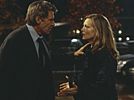 For
instance, the sequence I mentioned a minute ago, where Claire walks into
the misty bathroom, contains close-ups of her bare feet. There were not
good enough recordings of that made on the set, partly because the camera
was noisy and there were other off-screen sounds. We recorded those sounds
in post-production and put them in, but they're the kind of sounds that
people might assume were recorded while the camera was rolling because
there's nothing really special about them. When Michelle, in one of the
scenes that's a kind of tip of the hat to "Psycho," pulls on the shower
curtain and falls onto the floor, that's actually the sound of Dennis
Leonard, the supervising sound editor, falling onto a bathroom floor. For
instance, the sequence I mentioned a minute ago, where Claire walks into
the misty bathroom, contains close-ups of her bare feet. There were not
good enough recordings of that made on the set, partly because the camera
was noisy and there were other off-screen sounds. We recorded those sounds
in post-production and put them in, but they're the kind of sounds that
people might assume were recorded while the camera was rolling because
there's nothing really special about them. When Michelle, in one of the
scenes that's a kind of tip of the hat to "Psycho," pulls on the shower
curtain and falls onto the floor, that's actually the sound of Dennis
Leonard, the supervising sound editor, falling onto a bathroom floor.
It must be a hard thing to get the rhythm down right when you record
footsteps in foley. Do you go back to the same foley performers again
and again?
A supervising sound editor or a sound designer typically uses the same
foley walkers. It's like everything else; some foley performers are very
good at prop sounds; that is, finding imaginative things. Let's say a
character in a film is operating a black box with knobs and buttons on
it; a really good foley artist will go out and find something they can
use to make the sounds for it. Some foley people are great with props,
and some are amazing at getting footsteps exactly in sync in only one
or two takes. Denny Thorpe and Janna Vance performed the foley for this
film and most of the films that I've worked on. They're great.
Oftentimes with horror films and thrillers, there will be a set of
audio cues that occur every time the supernatural presence appears. Did
you do anything like that?
The whispering is really the only thing. There's a lot of whispering in
the movie, and there are a lot of water sounds. It's called "What Lies
Beneath," and ultimately, we find out that one of the meanings that has
is that this body is beneath the surface of the water. For instance, when
Claire goes to Madison's mother's house, it's next to a river, which you
hear only a bit when she's outside the house. You don't hear it at all
in the living room, where Claire and Madison's mother are having their
initial conversation, but in Madison's room I included a very loud sound
of flowing water. It's the kind of thing that probably doesn't register
with many people who see the movie, but it's a clue that water is important
to solving this mystery.
When in the editing process did you start putting in the sound, and
how did your job intersect with the editor's, Arthur Schmidt?
It intersected a lot. Good, imaginative picture editors do a huge amount
of this sound experimenting that I talked about earlier. Artie is certainly
one of those. Picture editors often don't get enough credit for doing
sound design, because a picture editor doesn't simply cut out the boring
stuff in the movie -- it's their job to make the movie work. One of the
tools that picture editors have at their disposal is sound. So the editor
working with the director often does amazing sound work before any sound
people ever actually show up. Since I try to get involved early on the
Zemeckis films, Artie Schmidt and I are often exchanging ideas. He'll
say, "What if we try this?" and I do some experimenting. I play things
for him, and he plays things that he's done for me. It's a great collaborative
process.
How did your job intersect with the composer's, in this case Alan Silvestri?
It's a good question. Unfortunately, the composer and the sound people
typically never have a conversation. It's one of those things that I think
is just ludicrous about the way movies are made. There are many practical
reasons why this is the case. The composer is in the same boat as the
sound people. He or she isn't brought on until the last possible minute.
They're crazed trying to come up with 90 minutes of music, and the last
thing they want to do is have a meeting to brainstorm about how the music
and the sound effects are going to work together. The sound effects people
typically feel the same way. But that's a tragic thing.
Like I said before, you never really know what's going to work until you
try things, and the only way to try things is to try them in collaboration
with what other people are doing. So Alan and I talk, and Bob talks with
both of us. Some directors -- especially the young ones who don't quite
know what they're doing – think, "If I tell the composer that it's 100%
his job to make the scene work, and if I tell the sound effects people
that it's 100% their job to make the scene work, then each of them will
build an arsenal of sound, and in the final mix we can weed out what works
and what doesn't."
I think that's a completely wrongheaded way of going at things. You'd
probably be amazed at how often that is the case. Both teams do build
this arsenal of sound, and it's kind of a logjam battle in the final mix
to see what's going to wind up in the scene. On the Zemeckis films, we
go out of our way to try to avoid that. On "Contact" and on "What Lies
Beneath," we had many discussions early on about whether a given scene
was going to be driven mostly by music or by sound effects. We would decide
in most cases which it was going to be, and that was great for me. It's
great for the composer, too, because we can both concentrate our energies
on the scenes where our work is really going to be heard. We don't waste
our time coming up with a lot of stuff that is never going to wind up
in the movie.
On this next project that we're working on, "Castaway," we're going to
try to do more collaboration, where the two of us come up with sounds
together. We hope that some of these will not be immediately identifiable
as either music or sound effects, but will fall somewhere in between.
That's a level of collaboration that almost never happens, but I'd like
to see it more.
You said earlier that you were careful to avoid making it too "sound
designy." How do you think that sound designers overdo it?
I've certainly overdone it enough. The same thing happens with visuals
all the time. I think when something calls attention to itself rather
than serving the story -- that's what I'm talking about. You never want
the audience to think, "Wow, what a cool sound that is" when they're watching
the film, because if they're doing that, they're not really watching or
listening to the film. They're thinking about the techniques behind the
film, which is fine on the third or fourth viewing, but it's not what
you want them to be doing when they're initially in the movie theater.
You want them to be lost in the dream of the movie.
Original
URL: http://www.editorsnet.com/article/mainv/0,7220,112676,00.html%20
|
 Dennis'
main job on this film -- I could say the same of the film that we did before,
"The Iron Giant" -- was to supervise the rest of the editors who were working
on the project and take care of the constant rescheduling. That always seems
to be necessary because everything is constantly changing -- when you record
foley, when editors come and go, etc. He was also reporting to DreamWorks
and to Bob Zemeckis' producers, Steve Boyd and Steve Starkey, about expenses
and deadlines. Dennis certainly had some creative input, but his job was
mainly administrative.
Dennis'
main job on this film -- I could say the same of the film that we did before,
"The Iron Giant" -- was to supervise the rest of the editors who were working
on the project and take care of the constant rescheduling. That always seems
to be necessary because everything is constantly changing -- when you record
foley, when editors come and go, etc. He was also reporting to DreamWorks
and to Bob Zemeckis' producers, Steve Boyd and Steve Starkey, about expenses
and deadlines. Dennis certainly had some creative input, but his job was
mainly administrative.  I
think another misconception about sound in movies is that the director knows
from the beginning exactly how everything is going to sound; that's almost
never the case. As with any work of art, you discover the most important
things as you go. You learn by trying things that don't work, going down
dead-end streets and doing a lot of experimentation. What I typically do
on Zemeckis films is I have some initial conversations really early, ideally
before the shooting starts. That way, from looking at the script and talking
with the director, I can say, "How about if we do this? Since the camera
is going to be doing this according to the script, how about if I try this?"
Sometimes it works and sometimes it doesn't.
I
think another misconception about sound in movies is that the director knows
from the beginning exactly how everything is going to sound; that's almost
never the case. As with any work of art, you discover the most important
things as you go. You learn by trying things that don't work, going down
dead-end streets and doing a lot of experimentation. What I typically do
on Zemeckis films is I have some initial conversations really early, ideally
before the shooting starts. That way, from looking at the script and talking
with the director, I can say, "How about if we do this? Since the camera
is going to be doing this according to the script, how about if I try this?"
Sometimes it works and sometimes it doesn't. 